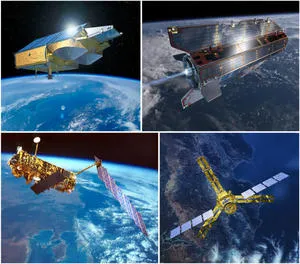
An international lesson-writing competition was launched recently by the European Space Agency’s LearnEO! project, which is hosted by the National Oceanography Centre (NOC).
LearnEO! (Learn Earth Observation) is an online educational resource for teachers, students and professionals, specialising in the science of using satellites to observe and monitor the Earth’s environment. This includes a wide range of example data, and ten new hands-on lessons demonstrating some of the many ways in which earth observation can contribute information about our environment.
Organisers hope that the competition will further increase the number of lessons, bolstering the databank of peer-reviewed training material on satellite observation of the Earth.
NOC’s Dr Val Byfield, who coordinates the LearnEO! project, said “LearnEO! aims to teach people how to use and interpret data from different instruments and satellite missions to understand how and why our environment is changing. It does this by providing a bank of data, lessons and background information that can be accessed by an online connection from anywhere in the world.
“Anyone can contribute teaching material to the LearnEO! project – subject to a peer review process – and the competition will provide an influx of new material to add to the open-access resource.”
Anyone over the age of 18 from any country can submit an entry to the competition. The lesson must be structured around three to five learning objectives and be completely self-contained, so that anyone can use it as a learning tool.
The range of possible lesson topics is very wide. For example:
- The use of earth observation data to reduce impacts from natural or man-made hazards,
- Monitoring and management of terrestrial, coastal or marine ecosystems,
- The use of satellite data in fisheries management or to support sustainable aquaculture development,
- Environmental monitoring or research to support climate change adaptation,
- Monitoring changes to polar ice sheets or the extent and thickness of sea ice.
The deadline for submissions is 31 January 2014 and winners will be notified in June, with prize giving later in the year. Further details can be found at www.learn-eo.org/competition.php.
Image: Four ESA satellites, representing missions supported by LearnEO!
Clockwise from top left: CryoSat, ESA’s ice mission; GOCE, ESA’s Gravity field and Ocean Circulation Explorer mission; Envisat, ESA’s Earth observation mission; SMOS, ESA’s Soil Moisture Ocean Salinity mission.